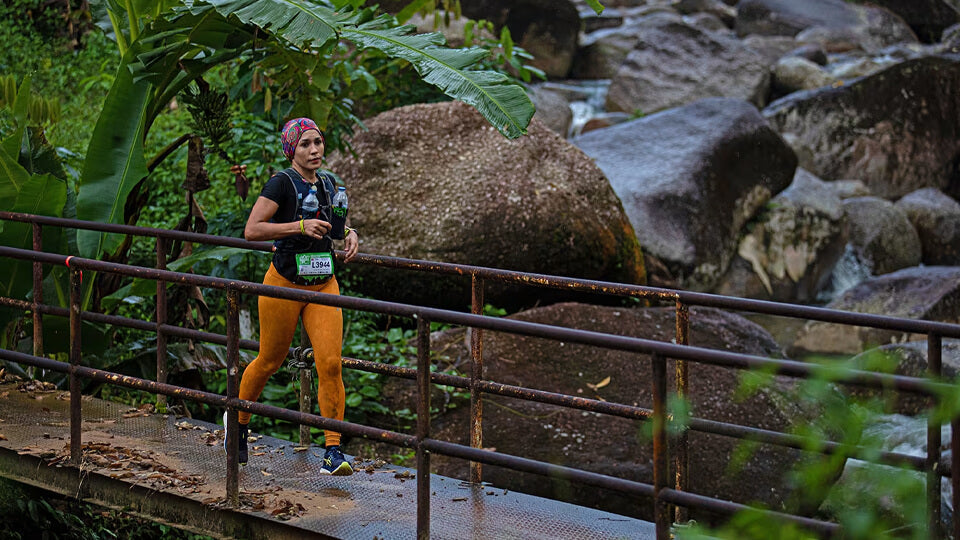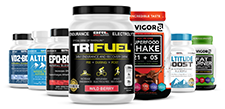Aid Station 101: What to Pack in Your Drop Bag

A well-stocked drop bag can make the difference between a smooth race and a total bonk. Whether you're running an ultramarathon, cycling a long gravel route, or competing in an Ironman, having the right supplies on hand at those crucial aid stations can be a real game-changer.
But what exactly should you be packing in that trusty drop bag? Let's dive into the essentials.
First Aid Essentials
Any good drop bag starts with a solid first aid kit. You never know when you might need to patch up an abrasion, treat a blister, or soothe an insect sting. Make sure to include:
- Band-aids (various sizes)
- Antiseptic wipes
- Antibacterial ointment
- Blister treatment (like hydrocolloid bandages)
- KT tape or other athletic tape
- Antihistamine tablets (in case of allergic reactions)
- Pain relievers (acetaminophen)
- Sunscreen
- Bug spray
The key is to pack a wide variety so you're prepared for any minor injury or skin irritation or blister that might pop up during your event.
Clothing and Layers
Endurance races often span a wide range of temperatures and weather conditions. Having a fresh change of clothes - and the right layers - can provide a much-needed morale boost when you're feeling fatigued.
Consider packing:
- A change of socks (both moisture-wicking athletic socks and warm wool socks)
- A lightweight long-sleeve shirt or jacket for warmth
- Breathable, quick-drying bottoms
- A hat or buff to keep your head/neck warm
- An extra pair of shoes, in case your feet need a break from your race-day kicks
The goal is to have options that will keep you comfortable, whether the weather turns cold and wet or hot and sunny.
Nutrition
No drop bag is complete without a stash of your favorite fueling products. While aid stations typically have a decent selection, it's always good to have your go-to snacks and drinks on hand.
Pack a mix of:
- Energy bars, gels, and chews
- Electrolyte drink mixes
- Salty or savory snacks (pretzels, potato chips, etc.)
- Candy or other simple carbs for a quick boost
- Solid foods like sandwiches, burritos, or wraps
The key is to include a variety of flavors and textures to combat flavor fatigue. And don't forget to pack extra of anything you know you'll really crave during the latter stages of your event.
Extra Equipment
Depending on the type of endurance event you're competing in, your drop bag may also need to accommodate some specialized equipment. This could include:
Ultra Runners:
- Trekking poles (especially for 50-milers and 100-milers)
- An extra hydration vest or waist pack (this can help minimize chafing too)
- Gaiters to keep debris out of your shoes
- A headlamp and extra batteries
Cycling:
- A spare bike tire and tube
- A mini bike pump
- A multi-tool
- Chain lube
- An extra pair of cycling shoes
- A bike light
- Duct tape (you never know!)
Triathlon:
- A change of goggles
- An extra swim cap
- Spare cycling shoes or running shoes
- Body glide
- Bike tools (see Cycling)
The goal is to pack anything you might need to make a quick repair or change during the race, so you can get back on the course as seamlessly as possible.
Drop Bag Tips
Now that you know the key categories to cover, here are a few additional tips for optimizing your drop bag:
Use a bright, clearly labeled bag. Choose a durable, high-visibility bag (like a neon duffel or backpack) with your name and contact info written prominently on the outside. This makes it easy for volunteers to quickly identify and deliver your supplies at the aid station.
Keep it organized. Use packing cubes, labeled ziplock bags, or other small containers to keep your items sorted and easy to locate. This will save you valuable time when you're rifling through your bag mid-race.
Don't pack anything irreplaceable. While your drop bag should be well-stocked, avoid packing anything super valuable that you can't afford to lose. Stick to race-day essentials and replaceable items.
Consider the weather. When packing clothes and other weather-dependent gear, make sure to account for the forecasted conditions on race day. You may need to adjust your layers accordingly.
Label your food. If you're including any homemade fueling items, be sure to label them clearly with the contents and any special instructions (like how to prepare a drink mix).
Time to Get Packing
Your drop bag is a crucial tool in your endurance racing arsenal. By packing it with a well-rounded selection of first aid supplies, clothing, fuel, and equipment, you'll be setting yourself up for success at those all-important aid stations.
Remember, the key is to think through every possible need you might have during the event — from minor injuries to fueling emergencies to unexpected weather challenges. With a little advance planning and organization, your drop bag can be the secret weapon that carries you across the finish line.
Take the next step in your training regimen: Try any BRL Sports supplement risk-free! If our natural nutritional products aren’t the best you’ve ever used, simply return your purchase for a 100% refund — no questions asked!
Also in Inspiration & Perspiration

EPO: The Natural Advantage for Long-Distance Runners
Boost endurance naturally—learn how your body’s own EPO powers oxygen delivery, stamina, and recovery for long-distance runs.

Beating the Winter Blues: Find Your Training Motivation
Beat the winter slump—discover smart, energizing ways to stay motivated, strong, and consistent through cold-weather training.

Your Essential Winter Marathon Training Guide
Conquer cold-weather miles—learn how to layer, fuel, and stay safe while training for your winter or early spring marathon.


